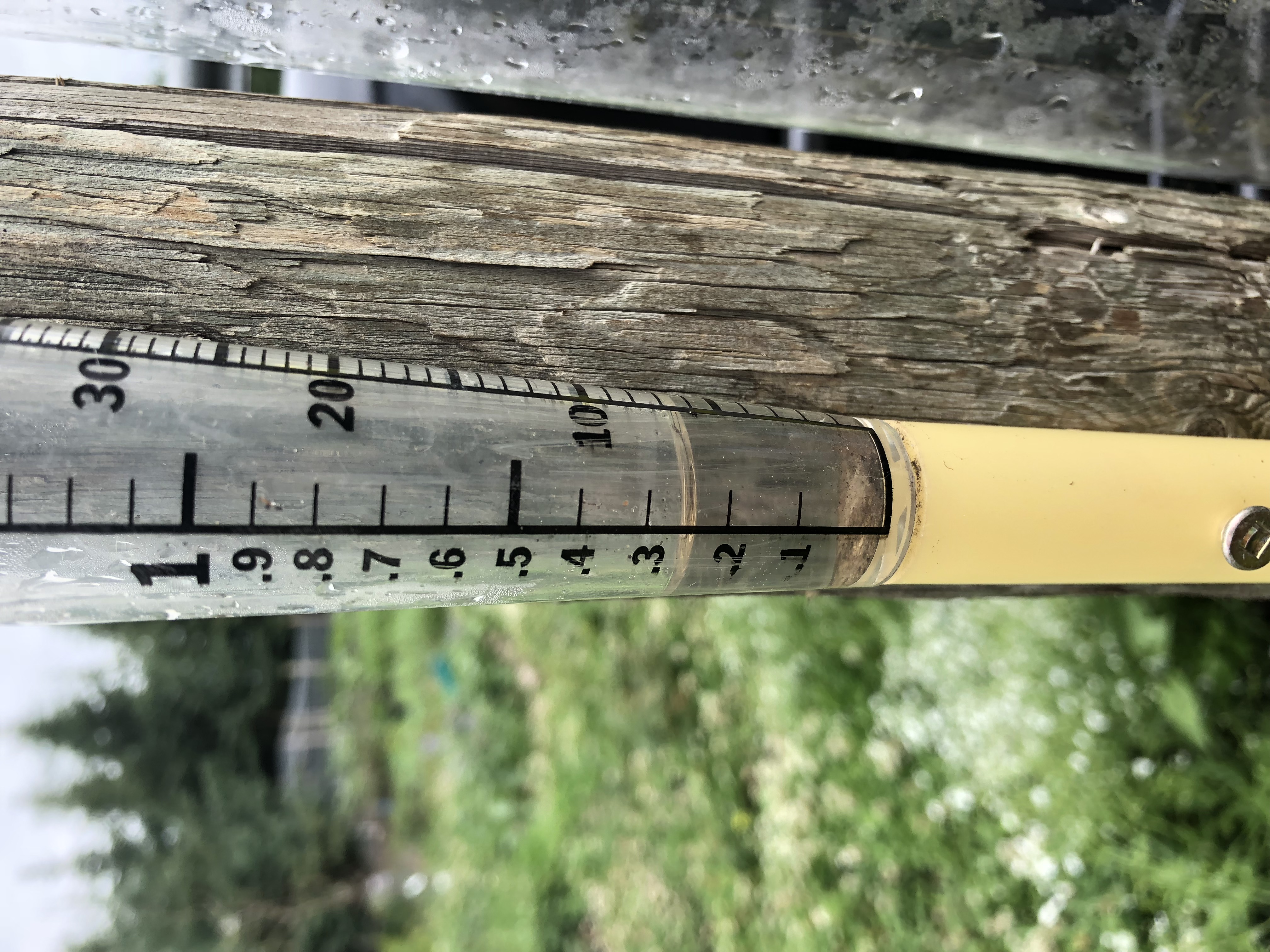
Water conservation in no till gardens
No till gardening is a system of gardening where the soil is mulched to prevent soil erosion, conserve water and reduce the pressure of weeds. No till gardening conserves water because the mulch prevents soil evaporation and it helps hold water after a hard rain shower.
No till gardening helps to conserve water.
As climate change has changed how our rain showers come from gentle showers over a period of days to heavy downpours, how our soil gathers moisture has to change too. In a heavy downpour, rain drops bounce off the soil cause the small pours in our soil to be covered by splashing mud. As the soil dries after a rain, a hard crust of soil starts to form on the soil which effectively blocks the pores in the soil from being open to soaking up water.
In addition, as the sun heats up our dark prairie soils, water is evaporated from the soil away from our plants.
In order to hold moisture in our soil, we must protect the soil from heating up under the direct prairie sunlight. We do this by using mulch on the soil. As the mulch also protects mud splash, a soil crust does not form underneath the mulch. Now when a heavy rain shower comes, the mulch slows the rain down so that the soil has time to absorb it.
As we build up organic material in our soils, we improve the soil structure as well. This means that there is more space for the soil to hold water. When we switch to no till, we must allow our soil time to heal and over time, it will start to hold more water; to the point that we will no longer have to water our soil as our soil will hold all the moisture it needs.
It will take a few years to build up the soil’s water holding capacity as organic material must build up in the soil for this to happen. For the first couple of years, you can expect to have to do some watering in your garden but it should be less than what you used to do.
To water your plants, water at the base of the plant in the early morning if possible. Plants that are left with moisture on their leaves over night can be suspectible to infection from plant diseases. It’s best to water at the base of the plant in the early morning so any water on the plant will dissipate quickly.
Vegetable garden plants need around 1” of water per week. How much is 1” of water? Place tuna cans around your garden and when the tuna cans are full, your garden has received the equivalent of 1” of water. Be careful not to focus on putting water where the tuna cans are, water evenly across the garden.
You can also check your soil moisture levels by digging a small hole with your fingers. Your garden has enough moisture when it goes down several inches in the hole. If just the surface of the soil is wet, you need to add more water.

